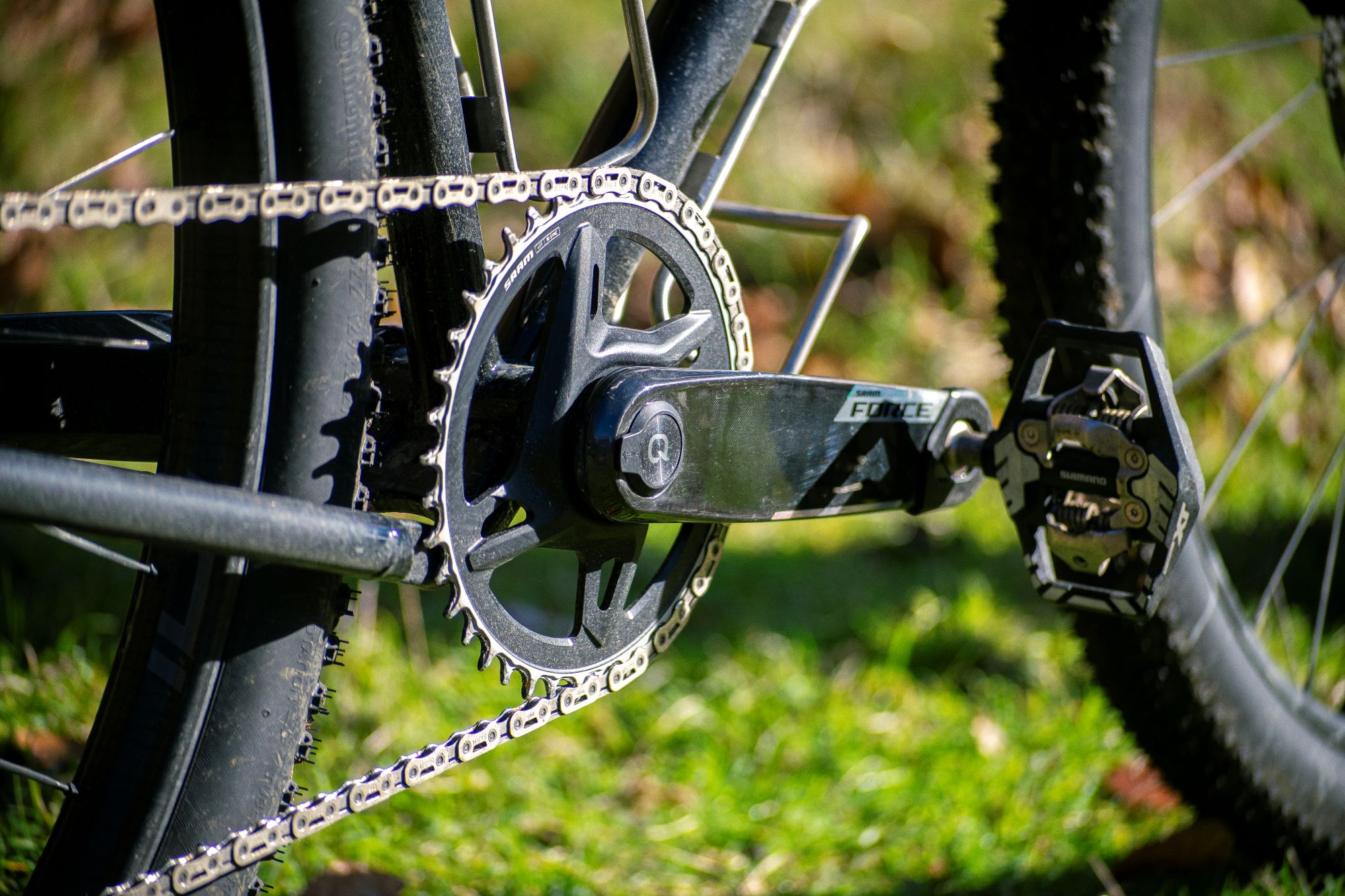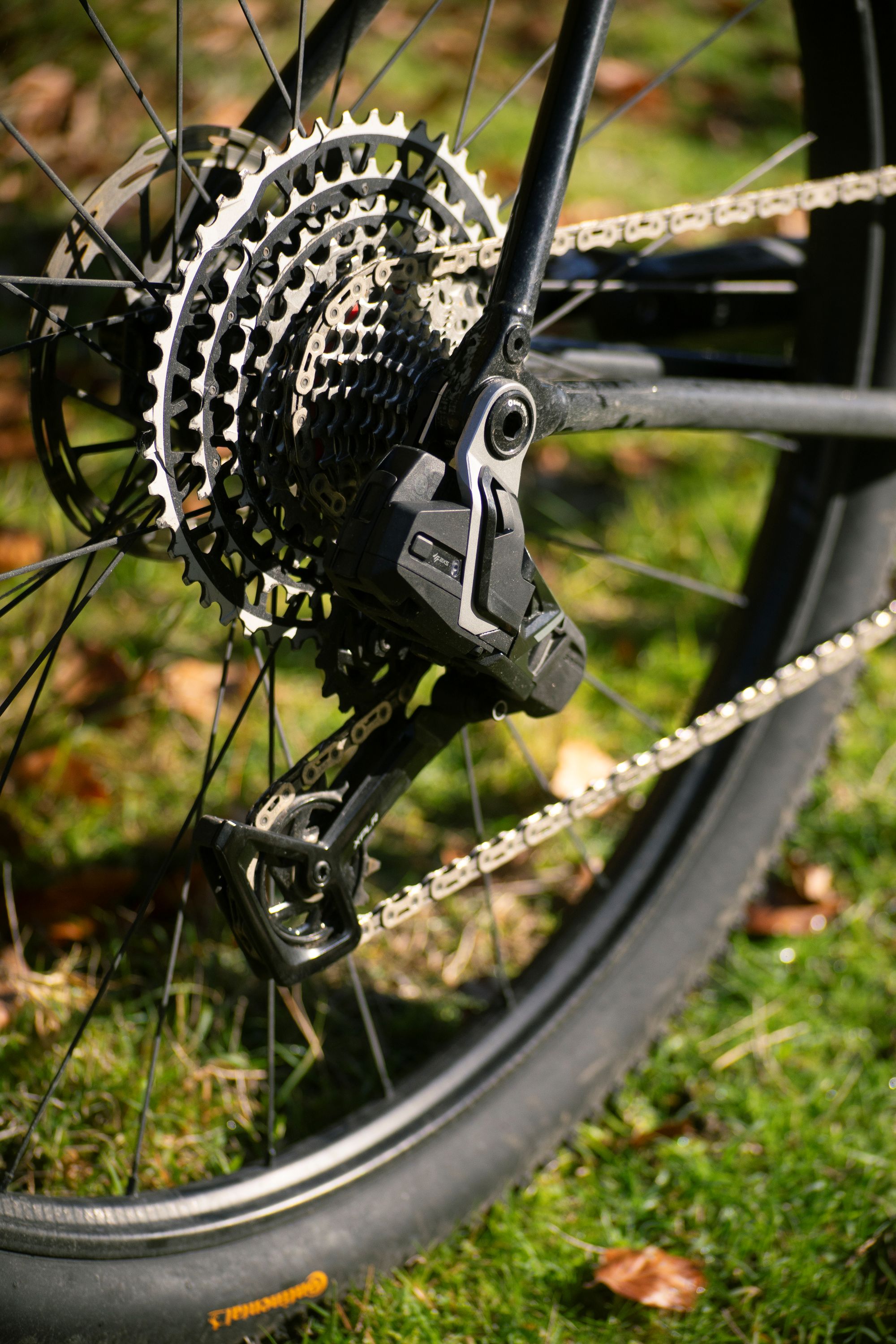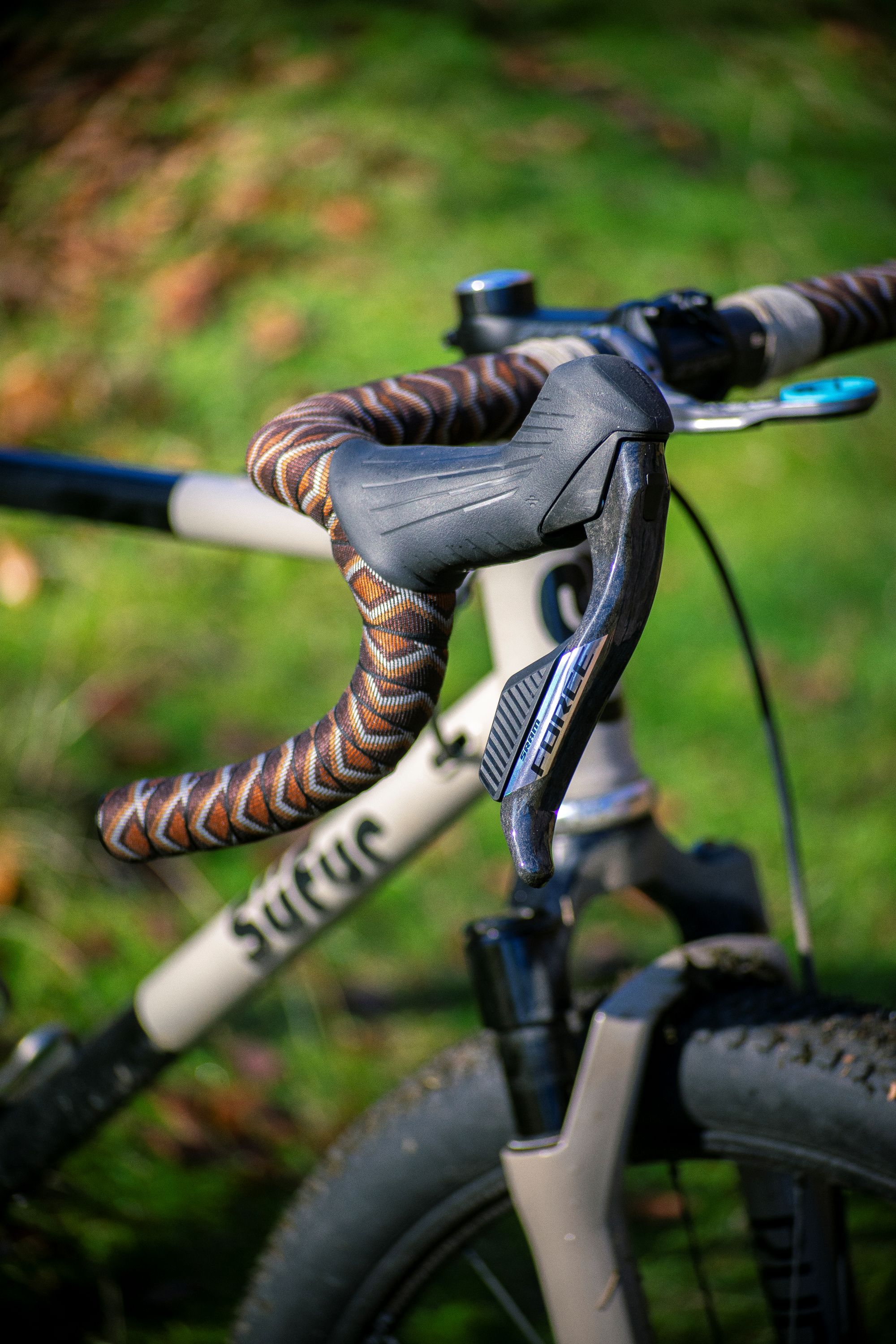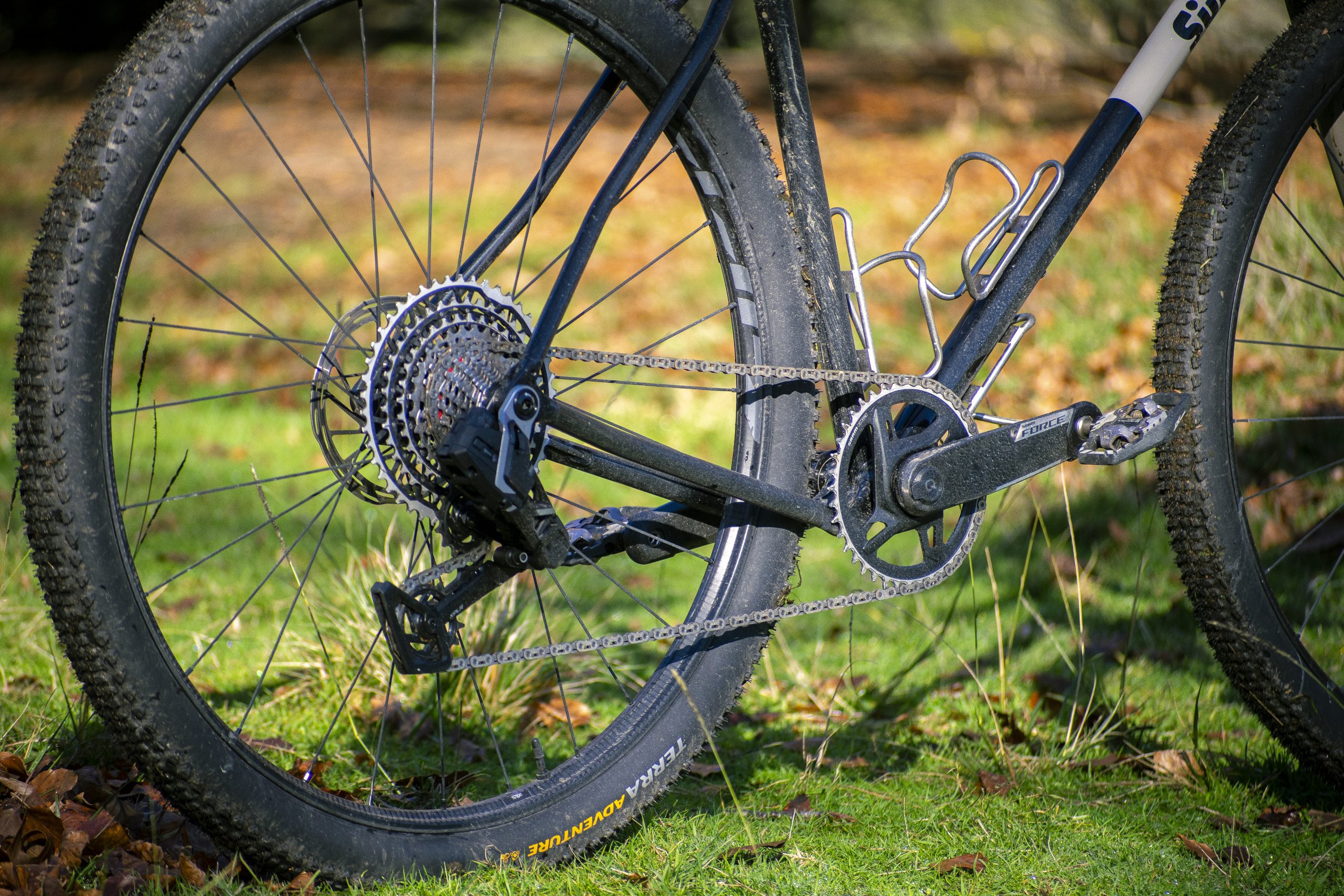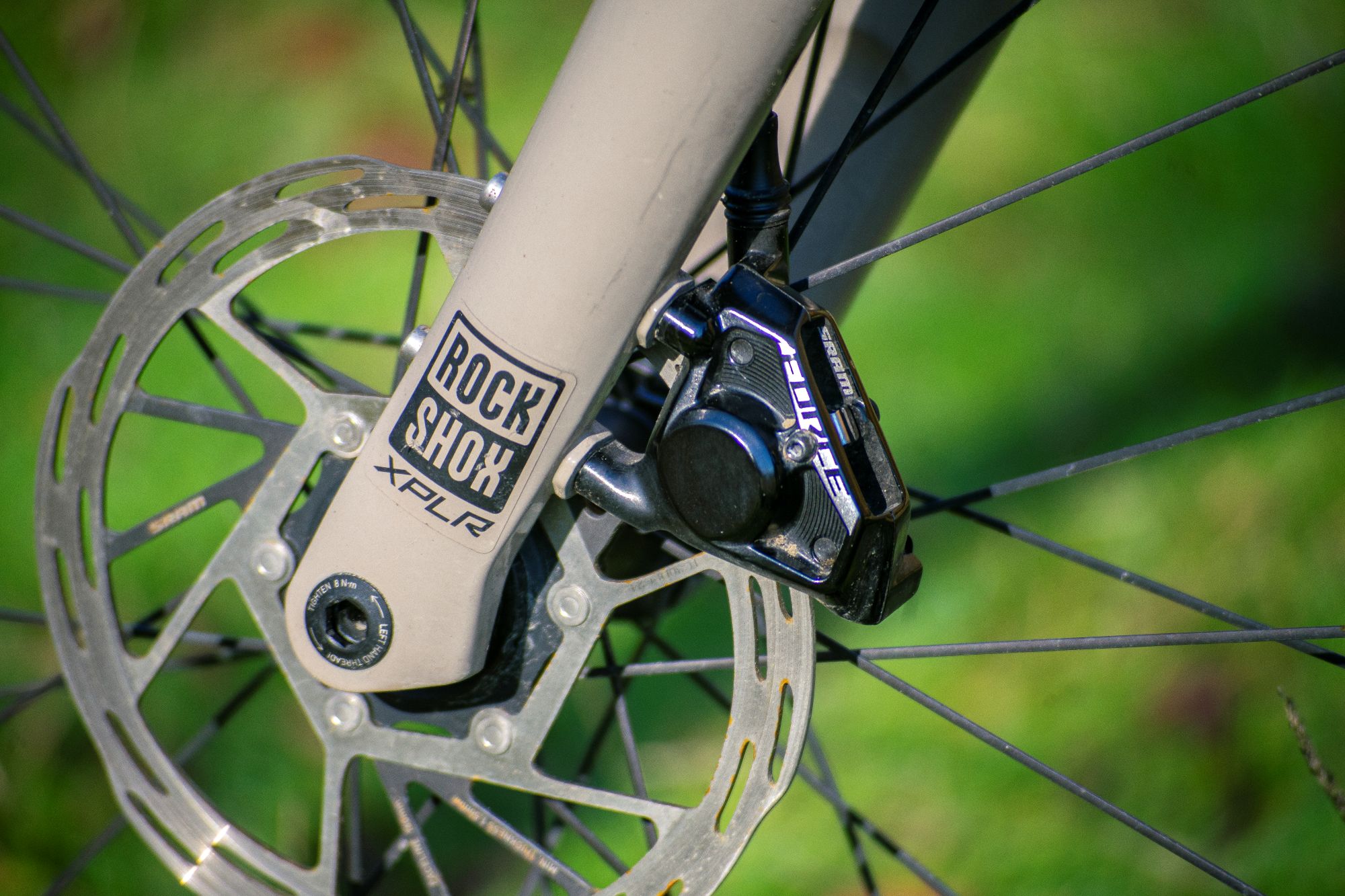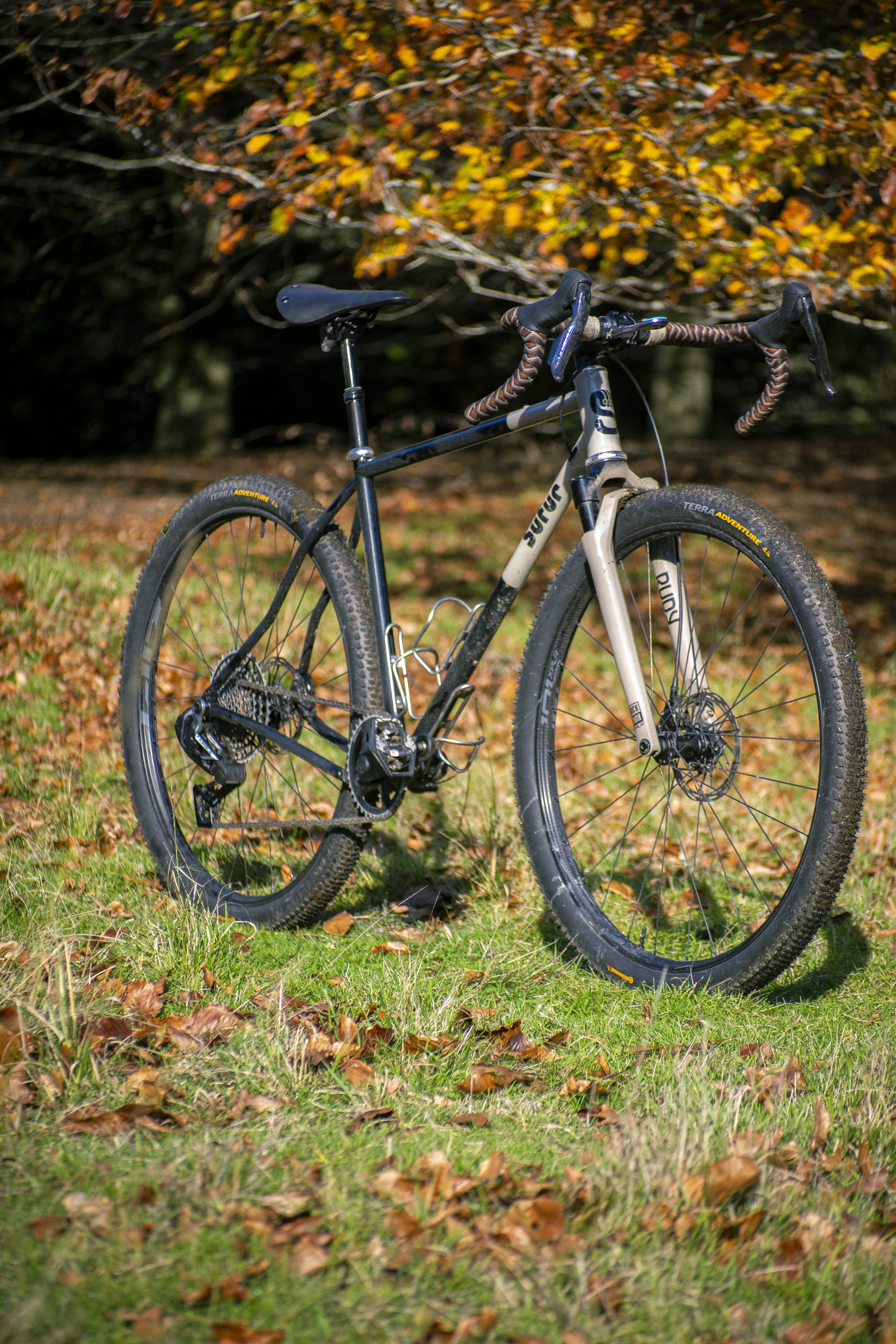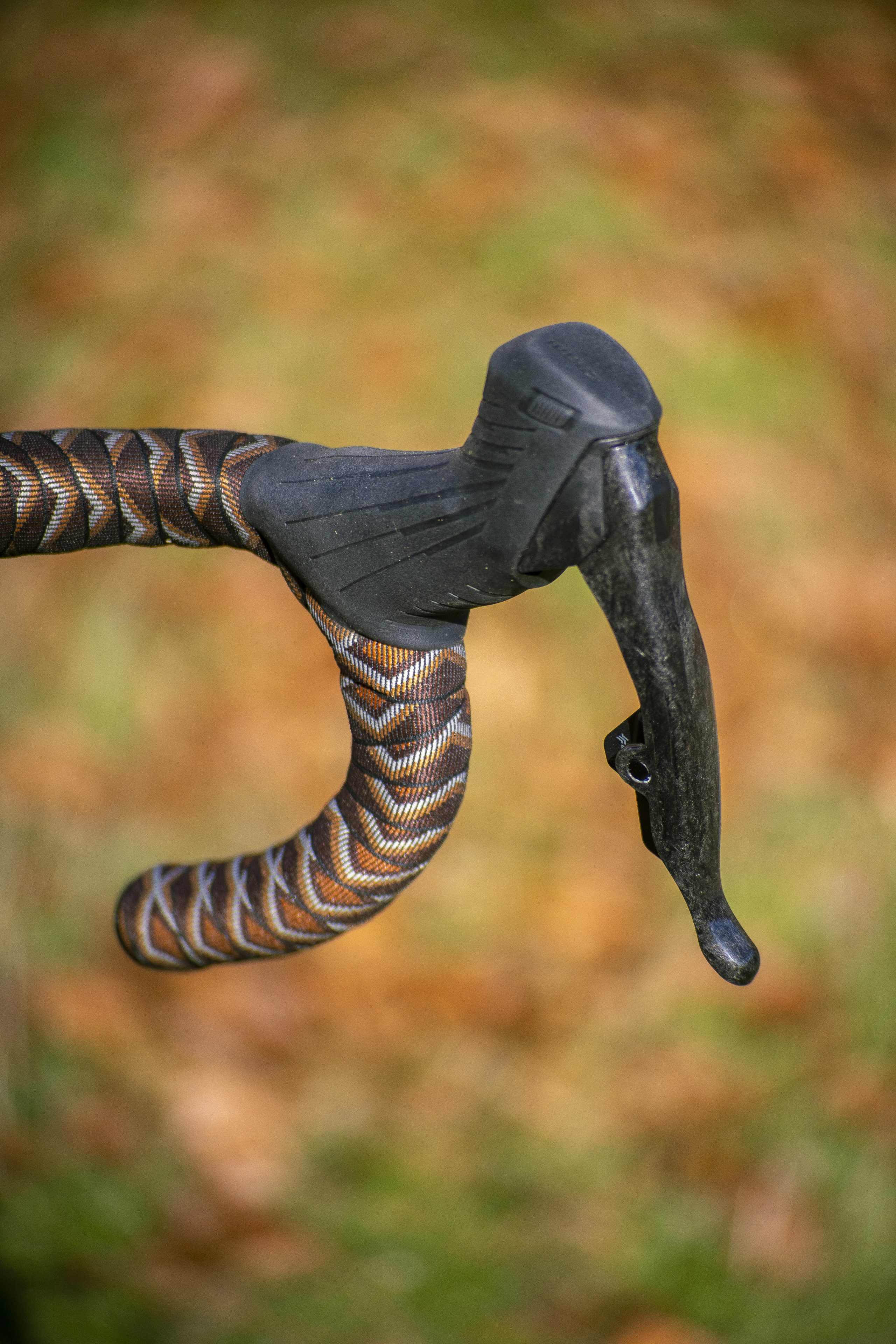Words Liam Friary
Images Jakob Lester
Top-tier products from major groupset manufacturers often have a trickle-down effect. Back in June, the latest iteration of SRAM RED XPLR AXS became available in Force and Rival configurations, expanding its reach to a broader market. The demands of gravel riding continue evolving, bringing wider gear ranges, product reliability, and weight into sharp focus. However, pricing for premium products has reached ludicrous heights. While this can be understandable for cutting-edge technology, it’s impossible to ignore the across-the-board cost increases. So news of a premium-level groupset being offered at a lower price point is genuinely welcome.
A few months ago, I received a box of SRAM Force XPLR AXS. The challenge was finding a suitable bike with a UDH (Universal Derailleur Hanger), since both SRAM Force XPLR AXS and Rival XPLR AXS can only be fitted to UDH-equipped bikes. Fortunately, I’d been working on a new custom steel bike from Süfur Cycles, Rufus Wenlock’s new handmade bicycle brand. The details of this build will be revealed later, but the timing was perfect for building up this new frameset.
The Tech
Let’s dig into the technical aspects of SRAM Force XPLR AXS. The standout feature is undoubtedly the direct-mount T-type derailleur—no more bent hangers from crashes, no more fiddly adjustment screws. It’s essentially a rigid, fixed architecture that shifts with precision and eliminates the limitations of traditional derailleurs. It does this by sandwiching the rear derailleur directly between the frame and the axle, creating a more robust and secure connection between bike and drivetrain. However, you need to either have or intend to purchase a bike with a UDH standard. More gravel bikes are becoming available with this standard these days, but if you don’t have a UDH-equipped bike and don’t plan to get one, this groupset won’t work for you—which is frustrating.
The Force XPLR rear derailleur works with SRAM’s latest 13-speed cassette featuring a 10–46 tooth range, and can be matched with either standard or aerodynamic chainrings to create a flexible and adaptable gravel drivetrain. SRAM has also introduced aerodynamic chainring options in 44 or 46-tooth configurations. The 10-46t cassette adds a crucial 12-tooth cog for tighter progression in the higher gears where you spend most of your time, while increasing the bailout range from 440 to 460 percent. Despite adding an extra cog, SRAM somehow shaved 30 grams off the total weight. The Force XPLR delivers solid chain retention and control through its straight parallelogram design.
The redesigned shift-brake levers deserve special mention. These feature the same acclaimed ergonomics as RED XPLR—longer hoods that accommodate a broader range of hand sizes while eliminating finger pinch under hard braking. One-finger braking from both hoods and drops, plus “Bonus Buttons” for ANT+ device control or auxiliary shift points make for a dialed cockpit that’s very user friendly.
The carbon crankset rounds out the package with cross-compatibility that’s actually useful. The longer DUB spindle works with both road and mountain bike width bottom bracket standards, including 73mm shells. That means you could theoretically run this on a modern Boost drop-bar mountain bike—though finding an XDR freehub for your Boost hub might prove challenging. They stuck the power meter right in the spindle instead of putting it on the spider like they did with the RED XPLR version. This integrated setup is impressive—it’s got an IPX7 waterproof rating, so you don’t have to baby it in bad weather, and the battery life is solid at 400+ hours, which is achieved with an easily replaceable AAA battery. The single-sided power meter is also available as an upgrade.
Ride Impressions
Straight out the gate, this groupset feels like premium kit. Every component has that tactile, high-quality feel in hand. The shifting is dialed and throughout my testing period I didn’t have any complaints. It’s robust and has stood up to a few months of solid abuse in hard and often muddy winter conditions.
The shifting is excellent and precise every time. It’s smart enough to wait for the ramp on each cog to get into the correct gear rather than forcing things, which means smoother shifts but not necessarily instant ones. Under load climbing or sprinting, shifts are smooth and decisive. Even after a few months of riding I haven’t noticed shifting differences between Force and RED XPLR. The excellent chain tension means your chain stays put on the chainring regardless of terrain roughness or power surges. No dropped chains during the last few months. The cage is built tight and rigid to keep everything whisper-quiet, while the wide chainline crankset delivers smooth and silent power transfer. I was impressed with the quietness of the groupset. The ability to shift anytime under load is a real standout, especially when riding rowdier terrain. It does require rewiring your brain—if you’ve been riding for a while you’ll be used to backing off power before shifting gears, but that’s not necessary here.
Moving to the rear derailleur, I’ve had quite a few impacts to my derailleur in the past which often led to broken derailleur hangers. This is extremely frustrating when out on a bikepacking excursion or exploring remote gravel roads. So, the removal of the traditional hanger via the UDH system makes perfect sense. The shifting has remained precise throughout the testing period despite some rough treatment.
The 13-speed cassette has suited me well for most of my rides. The gear spacing is well thought out—tight, single-tooth jumps on the smaller cogs so you can find that perfect cadence on flats and descents, then bigger jumps as you work your way up the cassette. It’s front-loaded toward the road side of things, starting with those smooth one-tooth steps, then moving to two-tooth jumps, three-tooth, and so on. The biggest leaps happen between 24-28, 32-38, and 38-46 teeth, but honestly, when you’re grinding up some brutal steep gravel pitch, you’re not thinking about cadence—you just need something that lets you keep the cranks turning without exhausting yourself.
On steeper climbs, you might find yourself wanting a bit more from the bailout gears, though that could just as easily be fitness talking as gearing limitations. The range does have its limits and is definitely targeted towards more of the ‘gravel-race’ crowd with 460 percent range. This could be solved with either a smaller chainring or Eagle Transmission rear derailleur that could be paired with 10-52t cassette offering 520 percent range. The SRAM ecosystem allows for seamless connectivity and pairing between any AXS components.
But it’s the braking that really stands out. The powerful stoppers are reliable, easy to modulate and inspire confidence. This matters more than you’d think when you consider that gravel bikes are inherently heavier than road bikes, and even more so when you’re loaded for adventure. Having brakes that can handle the extra weight while still offering precise control changes how you approach descents and technical sections. One-finger braking means genuine control from both hoods and drops. For me this matters when tackling rowdier terrain, loaded with bikepacking gear and needing excellent stopping power at your fingertips. On longer gravel descents and steeper terrain, the braking really came into its own offering precise modulation. I pushed harder and braked later as there was great stopping power on tap whenever needed.
The redesigned hoods are nearly identical to RED, both visually and technically. Carbon brake levers, improved ergonomics for one-finger operation, lever reach adjustment, and those newly added extra buttons for custom setup. The slightly extended hood body prevents finger pinch—a detail that matters on long rides. I’m a big fan of the hoods; they just feel great ergonomically. The hand sits really well on the hoods, and they’ve impressed me with all-day comfort. I adjusted the brake lever reach slightly to bring them in a little closer, which was very easy. On rough terrain the hoods kept you secure but also offered comfort, and even after numerous hours in the saddle I didn’t experience any hand discomfort.
What strikes you most is how composed everything feels. This isn’t a budget compromise—it’s RED-level performance with slightly different materials. SRAM used the same motors and mechanics as the RED groupset. The only real difference is materials that show up in weight and finish quality, where Force trails RED marginally. But for the price difference, those compromises are barely noticeable on actual rides.
This groupset is clearly aimed at serious gravel riders who want premium performance without the premium price tag. If you’re building a dedicated gravel race bike or need bulletproof reliability for long adventures, Force XPLR AXS delivers. Just make sure your frame has UDH compatibility before you commit.


